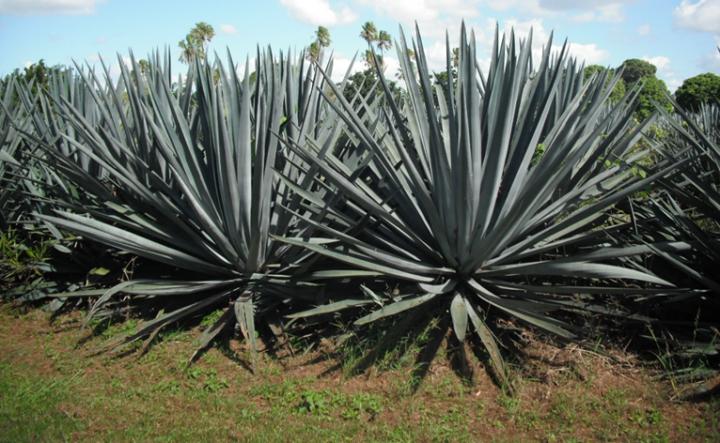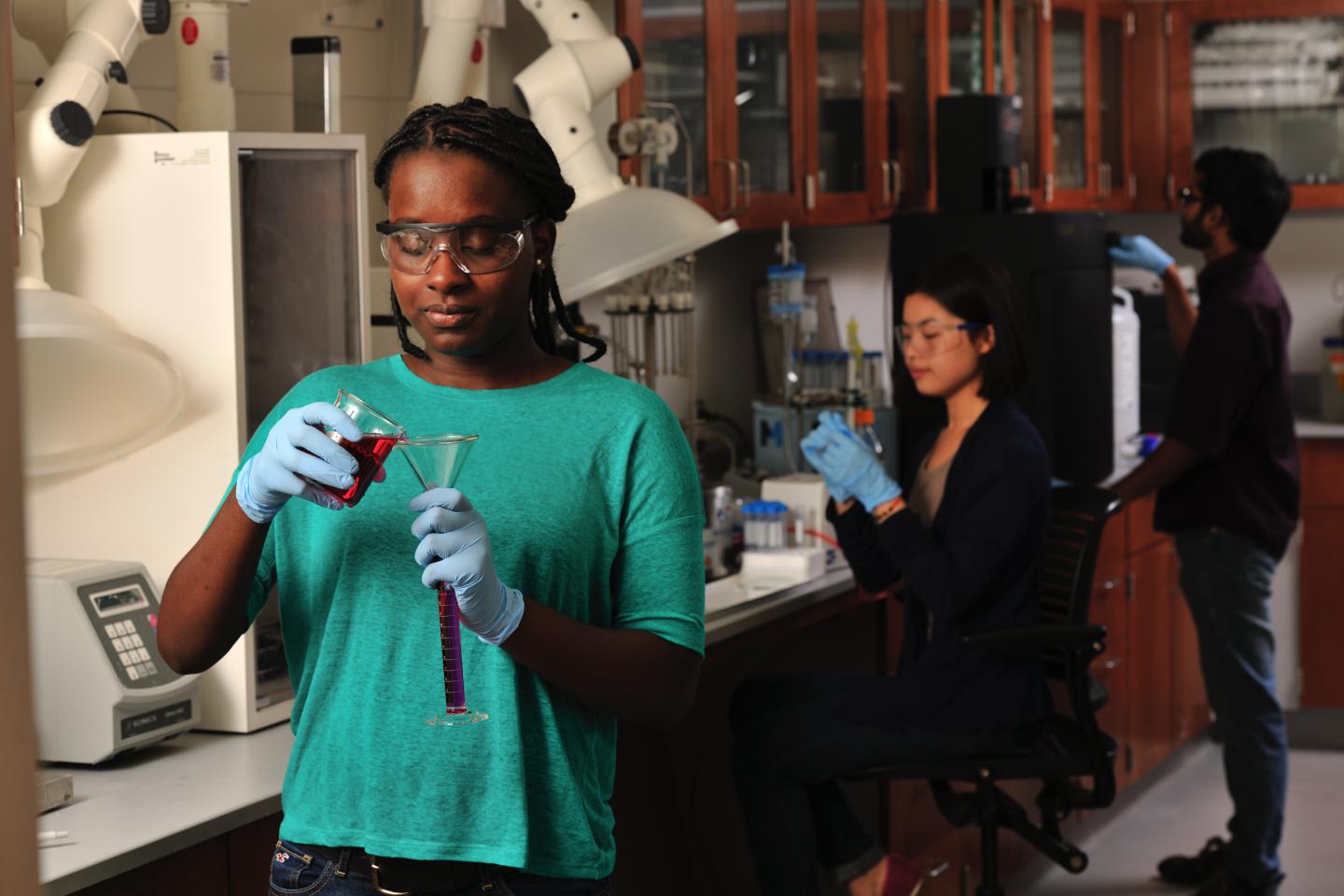Ethanol from agave could be used for transport fuel and hand sanitizer

Credit: University of Sydney
The agave plant used to make tequila could be established in semi-arid Australia as an environmentally friendly solution to Australia’s transport fuel shortage, a team of researchers at the University of Sydney, University of Exeter and University of Adelaide has found.
The efficient, low-water process could also help produce ethanol for hand sanitiser, which is in high demand during the COVID-19 pandemic.
In an article published this week in the Journal of Cleaner Production, University of Sydney agronomist Associate Professor Daniel Tan with international and Australian colleagues have analysed the potential to produce bioethanol (biofuel) from the agave plant, a high-sugar succulent widely grown in Mexico to make the alcoholic drink tequila.
The agave plant is now being grown as a biofuel source on the Atherton Tablelands in Far North Queensland by MSF Sugar, and it promises some significant advantages over existing sources of bioethanol such as sugarcane and corn, Associate Professor Tan said.
“Agave is an environmentally friendly crop that we can grow to produce ethanol-based fuels and healthcare products,” said Associate Professor Tan from the Sydney Institute of Agriculture.
“It can grow in semi-arid areas without irrigation; and it does not compete with food crops or put demands on limited water and fertiliser supplies. Agave is heat and drought tolerant and can survive Australia’s hot summers.”
Associate Professor Tan assembled the research team and led its economic analysis.
Lead author Dr Xiaoyu Yan from the University of Exeter, who led the lifecycle assessment, said: “Our analysis highlights the possibilities for bioethanol production from agave grown in semi-arid Australia, causing minimum pressure on food production and water resources.
“The results suggest that bioethanol derived from agave is superior to that from corn and sugarcane in terms of water consumption and quality, greenhouse gas emissions, as well as ethanol output.”
This study used chemical analyses of agave from a pilot agave farm in Kalamia Estate, Queensland (near Ayr) undertaken by Dr Kendall Corbin for her University of Adelaide PhD, supervised by Professor Rachel Burton.
“It is fabulous that the results of my chemical analysis can be used in both an economic and environmental footprint study and have real-world applications”, Dr Corbin said.
“The economic analysis suggests that a first generation of bioethanol production from agave is currently not commercially viable without government support, given the recent collapse in the world oil price,” Associate Professor Tan said. “However, this may change with the emerging demand for new ethanol-based healthcare products, such as hand sanitisers.”
“This is the first comprehensive lifecycle assessment and economic analysis of bioethanol produced from a five-year agave field experiment in north Queensland. Our analysis shows a bioethanol yield of 7414 litres a hectare each year is achievable with five-year-old agave plants.”
The study found that sugarcane yields 9900 litres a hectare each year. However, agave outperforms sugarcane on a range of measures, including freshwater eutrophication, marine ecotoxicity and – crucially – water consumption.
Agave uses 69 percent less water than sugarcane and 46 percent less water than corn for the same yield. For US corn ethanol, the yield was lower than agave, at 3800 litres a hectare a year.
“This shows agave is an economic and environmental winner for biofuel production in the years to come,” Associate Professor Tan said.
###
The paper ‘Agave: a promising feedstock for biofuels in the water-energy-food-environment (WEFE) nexus’ is published in the Journal of Cleaner Production
Notes to editors
Agave grows primarily in Mexico but is also found in parts of the United States and central and tropical South America. It is a succulent with a large rosette of thick leaves and a shallow root system. Tolerant to high temperatures and drought, it is adapted to future global warming.
Energy demand from the transport sector currently accounts for 60 percent of global oil use and will continue to rise due to rapidly growing vehicle population in emerging markets.
Ethanol, produced from sugar or starch through fermentation, is the world’s predominant biofuel.
DOWNLOAD the research plus photos of agave and Associate Professor Daniel Tan at this link.
INTERVIEWS
Associate Professor Daniel Tan | + 61 427 281 951 | [email protected]
Dr Xiaoyu Yan | +44 1326 259 485 | [email protected]
Dr Kendall Corbin | [email protected]
MEDIA ENQURIES
University of Sydney | Marcus Strom | +61 423 982 485 | [email protected]
University of Exeter | Duncan Sandes | [email protected]
DECLARATION
The authors acknowledge the continued support and generosity of Mr Don Chambers, Chief Executive of AusAgave, in allowing access to the Kalamia site in Queensland and experimental use of the agave material.
Media Contact
Marcus Strom
[email protected]
Related Journal Article
http://dx.





